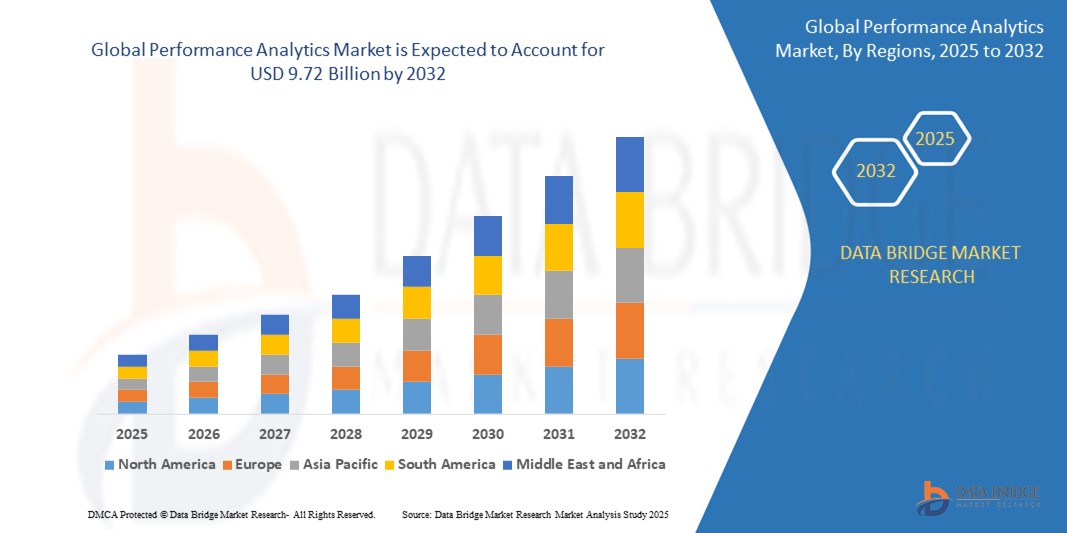Using AI in Performance Analytics: Smarter Insights, Better Outcomes
The Performance Analytics market was valued at USD 3.99 Billion in 2024 and is expected to reach USD 9.72 Billion...

Introduction
Performance analytics has become a key component of strategic decision-making in today’s data-driven world. Whether it’s assessing employee productivity, tracking marketing effectiveness, or evaluating business operations, organizations rely heavily on analytics to guide actions and measure success. However, traditional analytics methods often fall short when dealing with large volumes of data or when trying to uncover deeper, predictive insights. Enter artificial intelligence (AI). By integrating AI into performance analytics, businesses can unlock smarter insights and drive better outcomes across every department.
Definition
Performance analytics is the process of collecting, analyzing, and interpreting data to evaluate the efficiency, effectiveness, and outcomes of activities within an organization. It helps identify trends, measure progress toward goals, and support data-driven decision-making by providing insights into key performance indicators (KPIs).
What is Performance Analytics?
Performance analytics is the process of collecting, analyzing, and interpreting data to evaluate the effectiveness and efficiency of an organization’s activities. It covers a wide range of topics, including customer happiness, operational efficiency, financial measures, and employee performance. The objective is to acquire practical knowledge that can enhance results in the future. Static dashboards and reports on historical data have been used for this in the past. Although helpful, these methods can be reactive and have a narrow focus. AI transforms this dynamic entirely.
How AI Transforms Performance Analytics
AI-powered performance analytics goes beyond descriptive statistics. It leverages machine learning, natural language processing, and predictive algorithms to analyze data in real time and deliver actionable insights proactively.
Here are key ways AI enhances performance analytics:
Real-Time Data Processing:
AI systems can process large volumes of data from multiple sources in real time. This means businesses no longer have to wait for end-of-month reports to understand how they’re performing. Instead, they receive live updates and alerts that allow them to address issues or seize opportunities immediately.
For example, AI tools can monitor customer support interactions as they happen, flagging unresolved complaints or identifying high-performing agents on the spot.
Predictive and Prescriptive Analytics:
While traditional analytics is often descriptive (what happened), AI introduces predictive (what will happen) and prescriptive (what should be done) capabilities.
Using historical and real-time data, AI models can forecast future performance trends—such as sales projections, employee turnover rates, or potential equipment failures. Prescriptive analytics goes a step further, offering recommendations to optimize outcomes, like the best scheduling patterns for a workforce or the most effective marketing mix.
Personalized Insights:
AI can tailor insights based on the unique needs and roles within an organization. A sales manager might receive daily updates on lead conversion rates, while an HR executive gets alerts about employee engagement trends. This level of customization improves decision-making and boosts operational efficiency.
Anomaly Detection:
AI excels at identifying anomalies—sudden dips in performance, security breaches, or irregular sales figures—that might be missed by human analysts. Early detection allows for quicker resolution and minimizes potential negative impacts on the business.
For instance, in a manufacturing setting, AI might detect subtle fluctuations in machine performance that indicate an impending breakdown, enabling preventative maintenance.
Enhanced Employee Performance Management:
AI-driven platforms can analyze employee performance more fairly and accurately. Instead of relying solely on subjective manager reviews, AI considers a wide range of metrics—task completion rates, peer feedback, customer satisfaction, time-on-task, and more.
This holistic view enables personalized development plans, identifies training needs, and promotes data-informed promotions or rewards.
Applications Across Industries
AI in performance analytics is not limited to one sector—it is making an impact across diverse industries:
- Healthcare: Hospitals use AI to monitor staff performance, predict patient admission rates, and improve treatment outcomes.
- Retail: Retailers analyze shopper behavior, optimize inventory, and enhance customer service with AI insights.
- Education: AI helps track student progress, identify struggling learners early, and customize curriculum delivery.
- Manufacturing: Performance analytics with AI boosts quality control, operational efficiency, and equipment reliability.
- Finance: Banks and financial firms use AI for risk assessment, compliance monitoring, and fraud detection.
Overcoming Challenges with AI Integration
Although using AI into performance analytics has benefits, there are challenges as well:
1. Data Quality and Silos:
The quality of AI models depends on the quality of the data they are trained on. Poor-quality or siloed data can lead to inaccurate insights. Organizations must ensure data is clean, integrated, and accessible across departments.
2. Ethical Concerns:
Performance reviews powered by AI may give rise to privacy and equity issues. It’s essential to maintain transparency in how data is collected and used, and to ensure AI decisions are explainable and free from bias.
3. Change Management:
Adopting AI often requires a cultural shift. Employees may fear automation or feel threatened by algorithmic oversight. Clear communication, training, and involvement in the process can ease transitions and promote acceptance.
Best Practices for Implementing AI in Performance Analytics
To effectively integrate AI into performance analytics, organizations should consider the following best practices:
Start with Clear Objectives:
Define what you want to achieve with AI—whether it’s reducing costs, increasing productivity, improving employee satisfaction, or enhancing customer experience. Clear goals will guide technology selection and implementation strategies.
Invest in the Right Tools:
Choose AI tools that integrate well with your existing systems and offer scalability. Platforms like Tableau with AI extensions, Microsoft Power BI, IBM Watson Analytics, or custom machine learning models can be powerful enablers.
Ensure Cross-Functional Collaboration:
Performance analytics touches many parts of a business. Encourage collaboration between data scientists, department heads, IT, and HR to ensure holistic data collection and interpretation.
Monitor and Update AI Models:
AI models need constant tuning and retraining to stay relevant. Monitor their performance, gather feedback, and update algorithms to reflect changing business environments or new data.
Promote a Data-Driven Culture:
Encourage decision-making based on analytics at all levels of the organization. Provide training so that employees can interpret AI-driven insights and act on them confidently.
The Future of AI-Driven Performance Analytics
As AI technologies continue to evolve, the future of performance analytics looks increasingly intelligent and proactive. Emerging trends like generative AI, automated storytelling, and emotion AI may soon provide even deeper insights into organizational dynamics.
Moreover, integration with IoT devices, wearable tech, and advanced sensors will allow AI to capture more nuanced performance indicators—bringing a new level of precision to analytics.
In the long run, organizations that embrace AI in performance analytics will be better positioned to respond to market changes, empower their workforce, and achieve sustained growth.
Growth Rate of Performance Analytics Market
According to Data Bridge Market Research, the global performance analytics market is projected to grow at a compound annual growth rate (CAGR) of 11.77% from its 2024 valuation of USD 3.99 billion to USD 9.72 billion by 2032.
Learn More: https://www.databridgemarketresearch.com/reports/global-performance-analytics-market
Conclusion
AI is transforming how businesses perceive and enhance performance. By automating data analysis, providing predictive insights, and enhancing decision-making, AI enables businesses to move from reactive to proactive strategies. While challenges remain, a thoughtful, ethical, and well-planned integration of AI into performance analytics can lead to smarter insights and significantly better outcomes. For forward-thinking organizations, now is the time to harness the power of AI and turn data into a true strategic asset.






